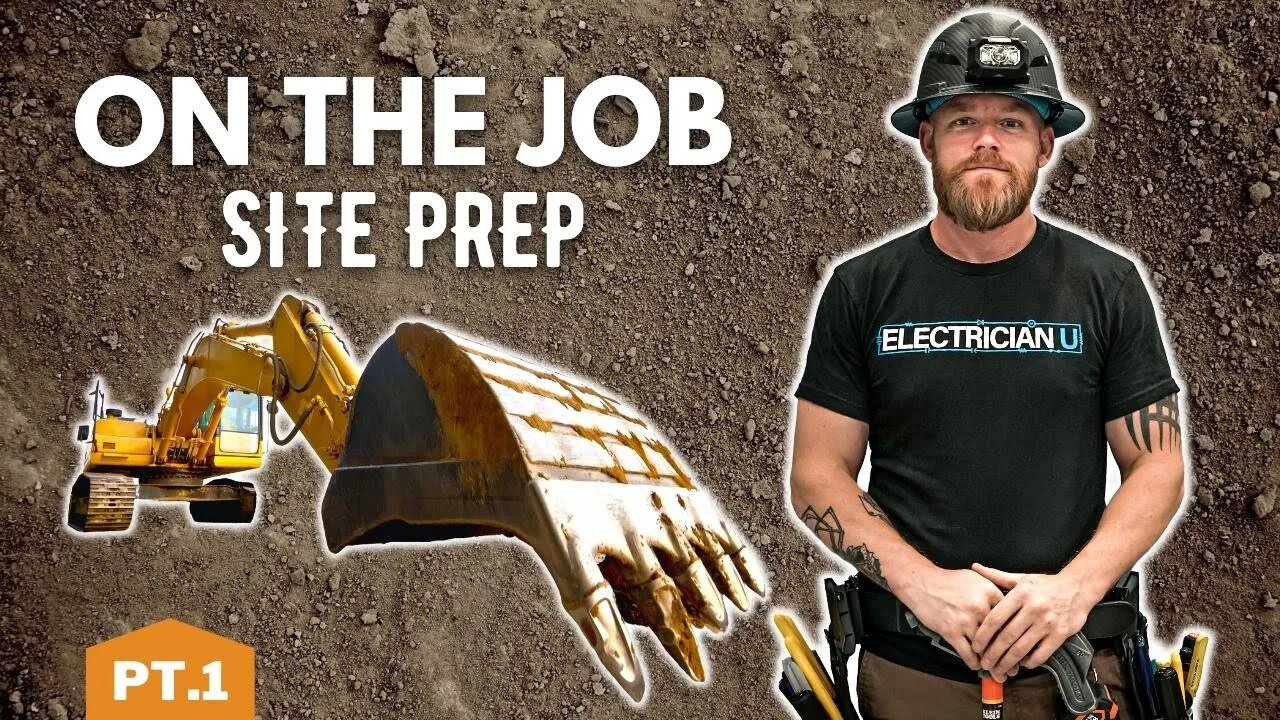Premium Only Content

Site Prep: Digging Underground
Site prep. It has to be done for most jobs (unless its strictly a remodel), but what exactly is it? And how does it affect us as the electrical trade. In the latest episode of Electrician U, Dustin takes us along with him on a commercial jobsite where they are performing the site prep to show us around.
🤘⚡️MEMBERSHIP⚡️🤘
JOIN ELECTRICIAN U - become a member and get:
FREE Continuing Education every year
FREE Practice Exams
FREE Monthly Video Courses
FREE Weekly Live Instructor-Led Classes
FREE Monthly Educational Newsletter
Premium Members-Only Content
Private Discord Channel
Monthly Members-Only Discord Chats
Sign up here --- https://www.electricianu.com/electrician-u-membership/
🎧🎹MUSIC AND VIDEO:🎹🎧
https://www.facebook.com/descantmv
🎬✍️ART AND ILLUSTRATION:✍️🎬
https://www.daverussoart.com
Almost all commercial projects will have underground work in some form or another. Unless it’s a remodel to an existing structure that is undergoing a minor facelift or change, the earth must be manipulated to serve the eventual structure. This may be digging footings/beams, installing rebar in those beams to provide rigidity and strength, and then pouring concrete in them. Once that concrete has set up and become solid, the MEP trades will generally come in and install the underground portions of their work. For us electricians, this is usually the electrical service from the utility, the incoming data conduits from the data provider, and even other sub panels/transformers/distribution gear throughout the building itself. We can’t always install things overhead due to height restrictions, or any other myriad of reasons. Also, if we were to pipe overhead, we must follow building lines from point A to point B, whereas underground, we can go straight from point to point, lessening the amount of materials we have to use as well as labor to install them. After the MEP trades have finished putting in the underground and backfilled, the remaining portion of the rebar can be placed, and the concrete can be poured for the slab. Once it has set up sufficiently, only then can the building actually be started!
The amount of underground needed to be put in the ground is totally dependent on the specific job. Some jobs have a ton of underground conduits that we spend months installing. Some jobs have the bare minimum of incoming utilities. Regardless of the quantity of underground pipe, we still have rules we must follow. Article 300.5 of the 2022 NEC is a big one that governs cover requirements. Certain areas require the conduits we install to be deeper than in other areas. Some of the depth requirements can be lessened if there is concrete on the top of them. If there is minimum underground and we aren’t digging it super deep, we may be able to dig it manually (with shovels), but if there is a considerable amount of underground conduit and/or it is deep, and if the soil is hard to dig, we may have to investigate using equipment to dig with. For single narrow trenches, for say a light pole, we can use a small trencher that looks like a large, wheeled chainsaw to dig the earth. Or we may need a backhoe or excavator for larger/deeper trenches. As a word of caution, DO NOT operate any equipment unless you have been trained on how it works. People can be seriously hurt by that equipment and screw ups can also be very costly!
As with any aspect of electrical work (or any trade work really) we must make sure we are competent in the task we are performing. If you have never installed underground conduit before, make sure you are under the direction of someone who has. In addition, when working underground we need to have a competent person available to assist us with the trenches themselves. Some soil is not stable enough to be dug straight down, but only a competent person who knows about trenching and shoring is going to know what the individual trench needs! So, make sure you have experience in what you are doing, make sure that you have the materials/equipment needed to install it properly, and make sure you have the trained personnel available to support the activity.
We hope this has been helpful in understanding the basic concept of underground work/site prep. Is there a topic you would like discussed? Please let us know in the comment section below. Please continue to follow Dustin and Electrician U as we are constantly adding new content to assist our followers on their electrical careers.
-
 0:58
0:58
Electrician U
1 year agoFISH STICKS! Every electrician needs these!
6.21K -
 LIVE
LIVE
IrishBreakdown
1 hour agoNotre Dame Football Buy/Sell/Hold
86 watching -
 43:47
43:47
The Kevin Trudeau Show Limitless
3 hours agoHow To Remember Anything: The Story Behind The Mega Memory System
5.28K2 -
 20:23
20:23
marcushouse
7 hours ago $0.40 earnedStarship Exploded and We Now Know How BAD The Damage Is!
7.14K5 -
 1:03:28
1:03:28
The Rubin Report
3 hours agoJD Vance Stuns Host with Brutal Facts of Attack on Iran
49K42 -
 1:37:00
1:37:00
Caleb Hammer
2 hours agoHis Wife Chooses Pleasure Over Children | Financial Audit
20.4K2 -
 DVR
DVR
The Shannon Joy Show
3 hours ago🔥🔥RFK Shocking Betrayal - Pushes Mass Bio-Surveillance For Big Tech Through Wearables. With Special Guest Doc Malik🔥🔥
20.7K4 -
 42:53
42:53
Neil McCoy-Ward
2 hours agoWe Should All Prepare NOW! (Says NEW Government Security Plan For The UK)
18.5K2 -
 35:50
35:50
Rethinking the Dollar
2 hours agoStablecoin Takeover: UBS Says Dollar’s Dead, Fed & Trump Back Crypto | Morning Check-In
14.4K -
 59:35
59:35
VINCE
5 hours agoThe Legacy Media's Iranian Psyop | Episode 72 - 06/25/25
205K131